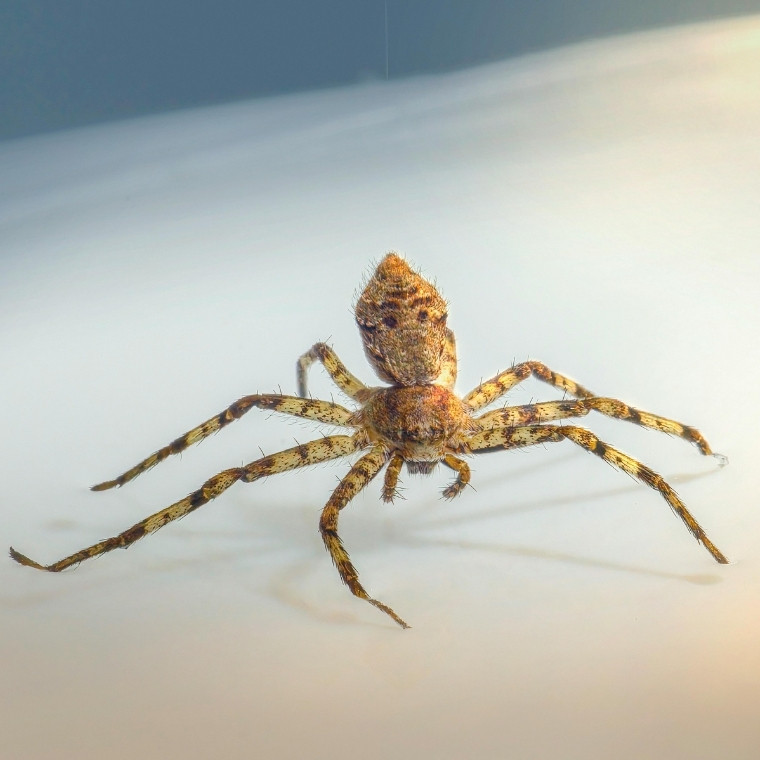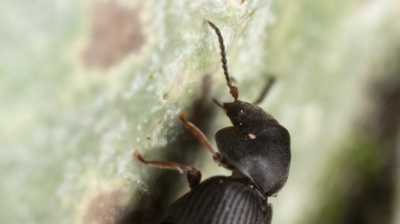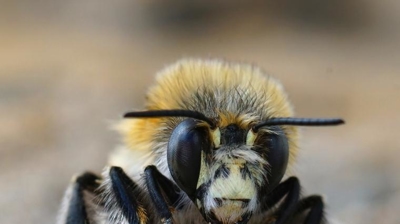
Crab Spiders

Are Crab Spiders Harmful?
Crab spiders, while not typically aggressive toward humans, can be considered harmful in certain contexts. These spiders possess potent venom used to subdue their prey, which generally consists of insects. However, their venom is not typically dangerous to humans. Here are the ways in which crab spiders might be seen as harmful:
- Bites: Although rare, crab spiders can bite if they feel threatened. Their bites are usually not lethal but may cause localized pain, swelling, and irritation. The venom can result in mild symptoms similar to a bee sting in some individuals. In rare cases, people who are allergic to spider venom may experience more severe reactions, such as anaphylaxis.
- Presence in Homes: Crab spiders can sometimes enter homes, particularly in areas with a lot of vegetation or where insects, their prey, are abundant. While they are not generally a significant threat in terms of direct harm, their presence in living spaces can cause distress or anxiety for those who fear spiders, contributing to discomfort in the home environment.
- Aggression Toward Pets: Although uncommon, there are occasional reports of crab spiders defending themselves or becoming more aggressive when they feel threatened, potentially resulting in bites to small pets such as cats or dogs. While these bites aren't typically harmful, they can cause irritation or infection if not addressed properly.
- Impact on Pollinators: Some species of crab spiders are known to ambush pollinators, such as bees and butterflies, by hiding in flowers and waiting to capture them. This predation can potentially reduce the population of these beneficial insects, indirectly affecting plant pollination and local ecosystems.
While crab spiders are not inherently dangerous to humans, their presence may cause some concerns due to their ability to bite, their impact on local ecosystems, and their occasional intrusion into homes or spaces.
Crab Spider Control
Hiring professional pest control for crab spiders is recommended for several reasons, even though crab spiders are generally not dangerous to humans:
- Expert Identification: Crab spiders (family Thomisidae) are often mistaken for other spider species. Our professionals can correctly identify the species and determine whether it poses any potential risk to your home, garden, or health. Misidentifying a spider could lead to unnecessary treatments or missed infestations.
- Preventive Measures: Crab spiders are often found outdoors on flowers, shrubs, or windowsills, but they can occasionally enter homes. Our professionals can assess entry points, recommend or install preventive barriers, and provide strategies to keep spiders from entering your living or working space.
- Targeted and Safe Treatments: While crab spiders are not venomous to humans, using over-the-counter sprays or DIY methods can be ineffective and sometimes unsafe. Our pest control experts have access to safe, targeted treatments that minimize exposure to humans, pets, and beneficial insects like bees and butterflies.
- Integrated Pest Management (IPM) Approach: Our professionals use IPM techniques to reduce spider populations in the long term, not just eliminate the ones you see. This includes habitat modification, reducing food sources (other insects), and strategic treatments that are environmentally responsible.
- Time and Convenience: Crab spiders can be elusive and reproduce quickly in favorable environments. Our professionals save you time and stress by conducting thorough inspections, treating infestations efficiently, and monitoring your property for future activity.
- Peace of Mind: Even though crab spiders are not aggressive, some people experience anxiety or discomfort around spiders. Our professional control ensures your home or garden is monitored and managed, reducing the chance of unexpected encounters.
While crab spiders are not a serious health threat, hiring our professional pest control ensures proper identification, effective removal, prevention of future infestations, and peace of mind—all done safely and efficiently.

What Do Crab Spiders Look Like?
Crab spiders, also known as Thomisidae, exhibit a wide range of appearances, but these spiders share some common characteristics that distinguish them from other spider families. Here is a detailed description of what crab spiders typically look like:
- Body Shape: Crab spiders are known for their distinctive crab-like appearance, which sets them apart from many other spider families. They have a flattened, often somewhat oval-shaped body that is broader than it is tall. This flattened body shape allows them to hide effectively on flat surfaces like flowers and leaves.
- Size: Crab spiders come in various sizes, depending on the species. They can range from a few millimeters to about 10-12 millimeters in length, with females usually larger than males.
- Coloration: One of the most remarkable features of crab spiders is their ability to change color to match their surroundings. This makes their coloration quite variable, and they can be found in various shades of white, yellow, green, pink, or brown. This color-changing ability helps them blend in seamlessly with flowers or foliage, enhancing their effectiveness as ambush predators.
- Eyes: Crab spiders typically have eight eyes arranged in two rows, forming a rectangular pattern. The arrangement of their eyes is a distinguishing feature among spider families. While their vision is generally not as acute as that of jumping spiders or wolf spiders, their eyes help them detect movement and locate prey.
- Legs: Crab spiders have stout and often relatively short legs compared to other spider families. These legs are well-adapted for gripping and holding onto surfaces, which is essential for their ambush hunting strategy.
- Chelicerae (Fangs): Like all spiders, crab spiders have two chelicerae with venomous fangs used for subduing and immobilizing prey. However, these fangs are typically not as large or prominent as those of some other spider families.
- Sexual Dimorphism: In many crab spider species, there is a noticeable difference in size and coloration between males and females. Females are often larger and more brightly colored, while males tend to be smaller and may have different markings.
- Specialized Adaptations: Some crab spider species have evolved specialized adaptations to mimic flowers or other elements of their surroundings. For example, certain species resemble petals or buds, enhancing their camouflage and making them even more effective at ambushing prey.
Crab spiders are characterized by their flattened, crab-like body shape, variable coloration, distinctive eye arrangement, and specialized adaptations for ambush predation. Their appearance can vary widely among species, but their common traits make them easily recognizable as members of the Thomisidae family.
Where Are Crab Spiders Found?
Crab spiders are commonly found in a variety of outdoor and indoor environments, and their preferred habitats tend to be places where they can easily ambush prey. Here are the most likely places where you might encounter crab spiders:
- Gardens and Flowerbeds: Crab spiders are often found in gardens, particularly in flowering plants. They are ambush predators, meaning they typically wait for prey (such as bees, butterflies, or other insects) to come near the flowers. They blend in well with the petals of flowers, making them hard to spot. Species like the flower crab spider (Misumena vatia) are particularly common in gardens.
- Tall Grass and Weeds: Crab spiders are also commonly found in tall grass, weeds, and other vegetation. They use these areas as cover to stalk and ambush insects, and they are adept at blending into their surroundings.
- Vegetation and Shrubs: Similar to tall grasses, shrubs, and bushes provide ideal environments for crab spiders to hide and ambush prey. They can often be found on the undersides of leaves or in the branches of plants.
- Wooded Areas: Some crab spider species prefer more wooded environments. These spiders might be found in the undergrowth or on trees, where they can hunt for various insects that inhabit the area.
- Near Water Sources: Crab spiders are sometimes found around lakes, streams, and ponds, where they may hunt for insects that come to drink or are attracted to the water source. These areas provide a diverse range of prey for them.
- Indoor Spaces: Inside homes, crab spiders may be found in basements, attics, and areas where insects are common. If your home has plants, particularly flowering ones, crab spiders may also take up residence in these areas. They may be attracted to spaces where light and warmth draw in other insects like flies and moths.
- On Tree Bark: Certain species of crab spiders are arboreal (tree-dwelling) and can be found on the bark of trees. They typically remain still, using the rough texture of the bark to camouflage themselves while they wait for prey.
Crab spiders prefer areas where they can easily conceal themselves and ambush passing prey. While they are not particularly aggressive toward humans, their ambush hunting style makes them most often encountered by accident while tending plants or walking through grassy areas.
What Do Crab Spiders Eat?
Crab spiders are versatile predators that primarily feed on insects, which they capture using an ambush hunting strategy. Their diet is diverse and typically consists of a wide range of arthropods. Some of the most common prey items include:
- Flies: Crab spiders often hunt common flying insects, such as houseflies or fruit flies. These flies are frequently caught while visiting flowers or other plants where the spider is waiting.
- Bees: Crab spiders, especially species like the flower crab spider, are known to ambush bees. They often hide among flower petals, where bees are attracted to collect nectar, making it easy for the spider to capture them.
- Butterflies and Moths: Butterflies and moths, especially those drawn to flowers for nectar, are also regular targets for crab spiders. Their slower, fluttering movements can make them easy prey for an ambush predator like the crab spider.
- Ants: Some species of crab spiders are known to hunt ants, which are often found in large numbers in gardens and around plants. Ants can be preyed upon when they venture too close to a crab spider's ambush position.
- Grasshoppers and Crickets: Larger crab spider species may prey on grasshoppers or crickets, particularly in fields or grassy areas where these insects are abundant.
- Other Small Insects: In addition to the insects listed above, crab spiders will also hunt a variety of other smaller arthropods, including beetles, flies, wasps, and even small spiders.
Crab spiders are opportunistic hunters and will typically eat any insect that they can overpower. They capture their prey by quickly grabbing and immobilizing it with their powerful forelegs. Once their prey is caught, the crab spider injects venom into it, paralyzing and digesting it externally before consuming the body. This diet of various insects allows crab spiders to play a beneficial role in controlling pest populations.
Crab Spider Life Cycle
The life cycle of crab spiders involves several stages, from egg to adult, and typically spans one year, though some species may live longer. The exact duration can vary based on environmental factors such as climate, food availability, and species. Here is a detailed breakdown of the crab spider's life cycle:
Egg Stage
- Egg Sac: The life cycle begins when a female crab spider lays her eggs. She produces an egg sac, which she often attaches to a secure spot like a leaf, twig, or hidden part of a plant. The egg sac can contain dozens or even hundreds of eggs, depending on the species.
- Egg Development: The eggs are incubated inside the sac, where they undergo development. The duration of the egg stage depends on environmental factors, including temperature and humidity. In warmer climates, the eggs can hatch more quickly, while in cooler conditions, it may take longer.
Nymph (Immature) Stage
- Hatching: When the eggs hatch, the spiderlings (young spiders) emerge. These tiny, immature spiders are typically very small and vulnerable. At this stage, they resemble miniature adults but lack fully developed features like the characteristic coloration and larger size.
- Molting: Spiderlings go through a series of molts as they grow. With each molt, they shed their exoskeleton and develop into more mature forms. During this nymph stage, they remain relatively small and continue to feed on small insects.
- Duration: The nymph stage lasts for several weeks or months, depending on environmental conditions and the species. During this period, they continue to grow and mature.
Juvenile Stage
- Further Development: After a few molts, the spiderlings transition into juvenile crab spiders, which are more recognizable as adult crab spiders but are still smaller and may not yet exhibit the full coloration or size of mature individuals. They begin to more actively hunt, developing the ambush behavior that is characteristic of adult crab spiders.
- Feeding: Juvenile crab spiders, like their adult counterparts, prey on various insects, including flies, bees, and other small arthropods. This feeding allows them to continue growing and accumulating the energy needed for the next stage.
Adult Stage
- Maturation: After several molts, the juvenile crab spider reaches maturity. The timing of maturity can vary, but by the end of the summer or early fall, most crab spiders have fully developed into adults. They will have their characteristic size, color, and hunting behaviors.
- Reproduction: In the adult stage, the male and female crab spiders engage in mating. Males often seek out females, and mating typically occurs in late summer or early fall. After mating, the female will produce her egg sac, starting the life cycle over again. Some species of crab spiders may also exhibit sexual dimorphism, where females are larger than males.
Death
- End of Life Cycle: After mating and egg-laying, adult crab spiders generally die by the onset of cold weather in temperate climates. In warmer areas, some species may live longer and produce multiple egg sacs. The lifespan of an adult crab spider typically ranges from several months to about a year, depending on environmental factors.
- Overwintering: In colder climates, crab spiders may not survive the winter as adults. Instead, they leave behind their egg sacs, which can overwinter and hatch when temperatures warm up in the spring. The spiderlings that hatch in spring will start the cycle again.
- Species Variation: Some crab spider species may have slightly different lifecycles. For example, certain species in more temperate regions might take two years to complete their life cycle, while others may complete it in one year.
Crab spiders are generally solitary creatures, and their life cycle revolves around ambush hunting strategies and reproduction to ensure the survival of the species. Their ability to adapt to a variety of environments and prey on a wide range of insects makes them effective predators in their ecosystems.

Hear From Our Happy Customers
-
"Wonderful Service"
Wonderful service. Jarvis is great. Took care of everything I needed. Thank you!
- Henry P. -
"Exceeds Expectations"
I can’t say enough positive things about this company... The tech that came out, Jarvis went above and beyond my expectations. Thank you guys, I will continue using your services.
- Jake M. -
"Fantastic & Patient"
Jarvis was fantastic and patient. He answered my questions with an in-depth explanation and addressed all of my areas of concern. Would love for him to be my assigned tech going forward. Well done!
- Yonnette M. -
"Great Communication"
Tech was on time, communication was great, and he accommodated my needs.
- Alonzo W. -
"Professional & Considerate"
I’m pleased with Miche services. Jarvis came today. Professional and considerate. Thank you!
- Judy B. -
"Very Knowledgeable"
The tech that arrived was courteous, professional, and very knowledgeable. He was Great.
- Uerial I.



